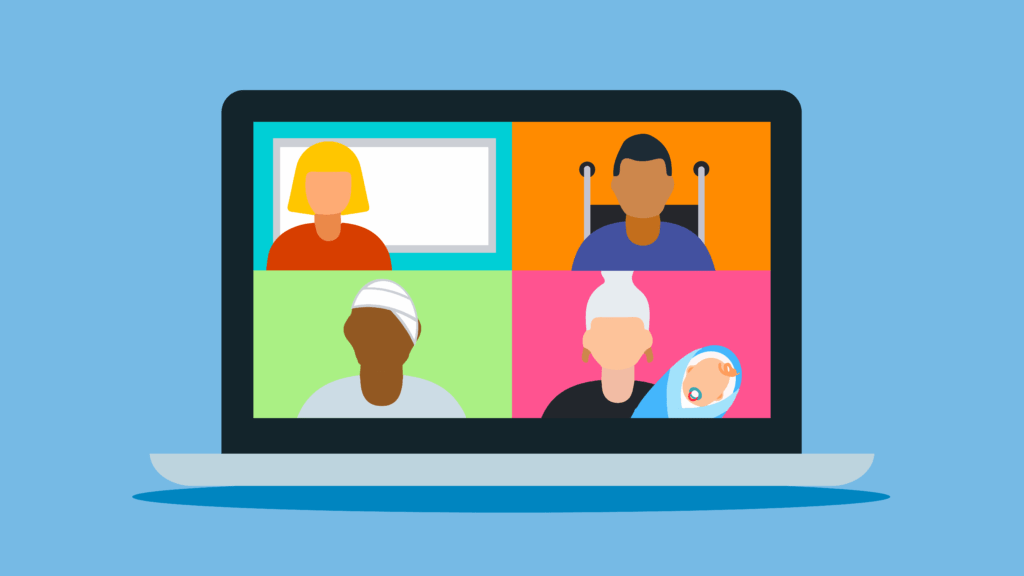
“The World is Our Campus” — this has never been more true than the last few semesters when students have tuned into BYU classes from every corner of the world via Zoom. While many look forward to gathering again, some students dread the end of a much more accessible educational experience.
Attending class every day on a campus that lacks basic accommodations like child care, on-site parking, an intra-campus shuttle, etc. isn’t a feasible option for those with various physical and mental disabilities, illnesses, or familial responsibilities.
While the structure of each class has varied, each of BYU’s departments and professors have received training and experience in how to broadcast a lecture via Zoom over the past three semesters. BYU should continue to offer this option for each class for those who cannot be physically present on campus, thus removing barriers and increasing access to quality, faith-based education.
For student parents
BYU’s sponsoring organization is a church that preaches the importance of both receiving an education and starting a family. Yet somehow the university does nothing to accommodate students who choose to follow both of these teachings while at BYU.
The BYU David O. McKay School of Education, College of Nursing, and Didactic Program in Dietetics all have formal policies prohibiting children in class. Even if professors do allow parents to bring their children, babies have needs that don’t follow a regular class schedule: napping, breastfeeding, diaper changes, etc. Without any campus childcare options, this often forces at least one parent (usually the mother) to either take fewer classes or drop out entirely.
During the pandemic, student mothers were able to open their laptops and continue their studies with their babies in arms, thus providing them with access to education they otherwise would not have had. I was one of these women. Imagine the culture shift if Latter-day Saint women were supported in their educational endeavors and never felt the need to drop out of school because they followed prophetic counsel to bear children. Student parents need Zoom classes.
For the physically disabled
BYU’s campus spans 557 acres, making it the second-largest in the state. From end-to-end, the school is about one mile long and one mile wide. This isn’t unreasonable for able-bodied young adults, but not all of our students are able to walk that far without difficulty, not to mention in under 10 minutes to get to their next class.
For students in wheelchairs, pregnant students, and even those who have undergone surgery or broken a bone — physically getting their body into a classroom can seem daunting and may prevent them from attending.
BYU has yet to implement any sort of shuttle around campus for these students, and building the new School of Music facility eliminated the only student-designated parking lot within a reasonable walking distance of most classrooms. If they won’t improve parking or shuttle accommodations, BYU needs its professors to provide their disabled students with a Zoom link.
For the chronically ill
Everyone catches the flu or needs to visit the doctor every once in a while. But some of BYU’s student body is battling critical illnesses that require more than a few days away from the classroom.
One of my peers was undergoing chemotherapy in a California hospital during Fall Semester. Yet because our class was on Zoom, she was able to attend and learn from a world-renowned photojournalist every week while still receiving the life-saving medical treatment she needed.
My sister-in-law was just accepted into BYU but is battling a severe eating disorder. She is afraid she won’t be able to start college in the fall because her treatment won’t be over. If she were able to attend her freshman courses via Zoom, she could get started on her education rather than falling behind on her future just because she’s trying to stay alive.
Regulation
Yes, it’s been proven that in-person instruction leads to the best learning outcomes. When the population is vaccinated and the virus is under control, BYU will likely return to its original teaching model where many teachers require attendance in their class to earn a passing grade.
To ensure the Zoom option is not abused by those who just want to spend their semester on vacation, exceptions should be made through the University Accessibility Center. The same people who coordinate volunteer note-takers can coordinate Zoom coverage of classes a given student needs to graduate. The list of qualifications should be generous, including physical illness, physical disability, pregnancy, childbirth, clinical mental illness, etc.
Moving forward
The majority of BYU’s student body was disappointed when classes went remote. But for some, it was the biggest blessing and relief of their academic career. Those who thought education was out of reach were suddenly welcomed into virtual classrooms and felt equal to their peers.
BYU’s mission statement says the university’s purpose is to “assist individuals in their quest for perfection and eternal life.” We all need that assistance, including those who physically cannot sit at a desk in a classroom in Provo. The last year has given us the answer of how to serve these students — I only hope BYU will continue to do so.




